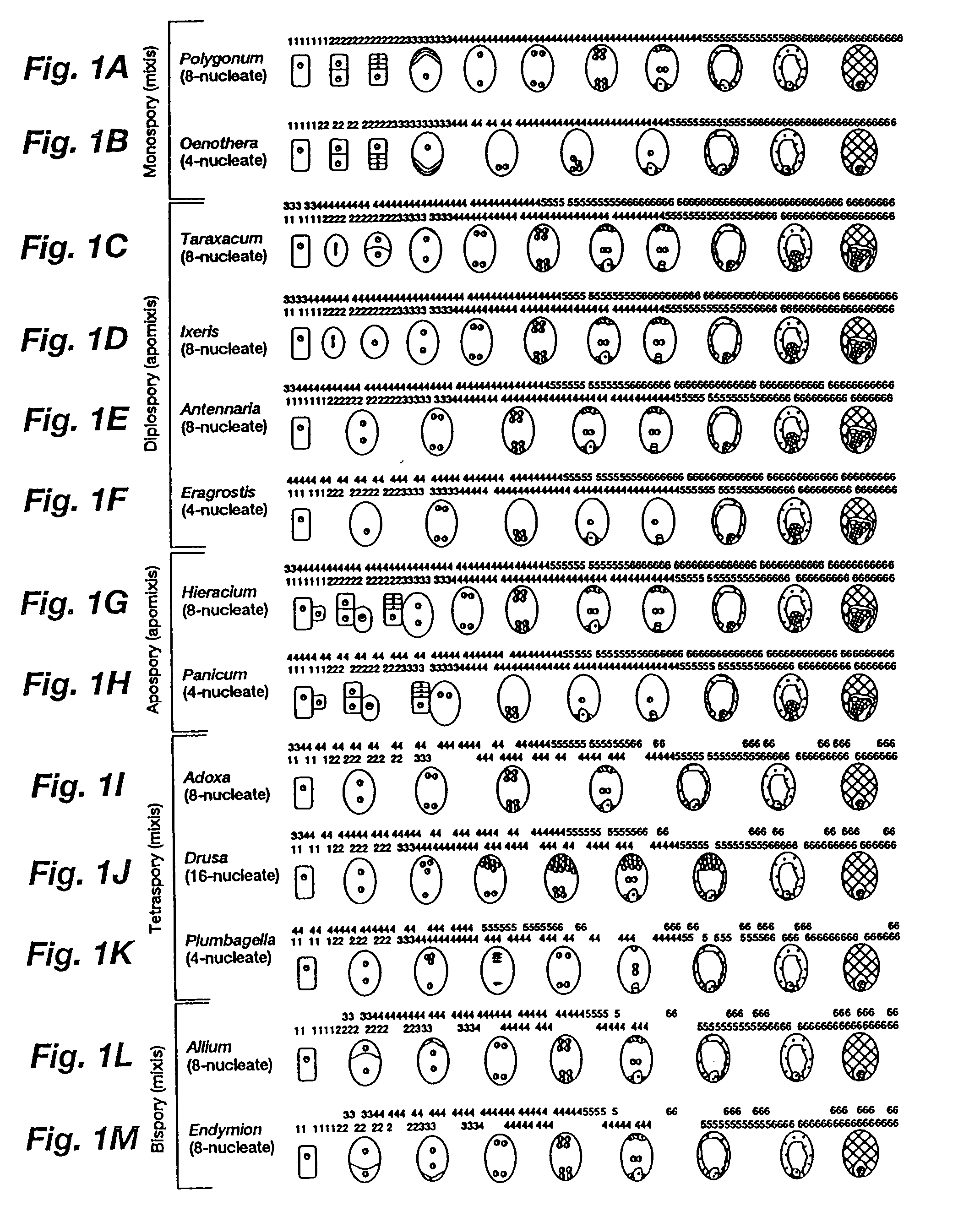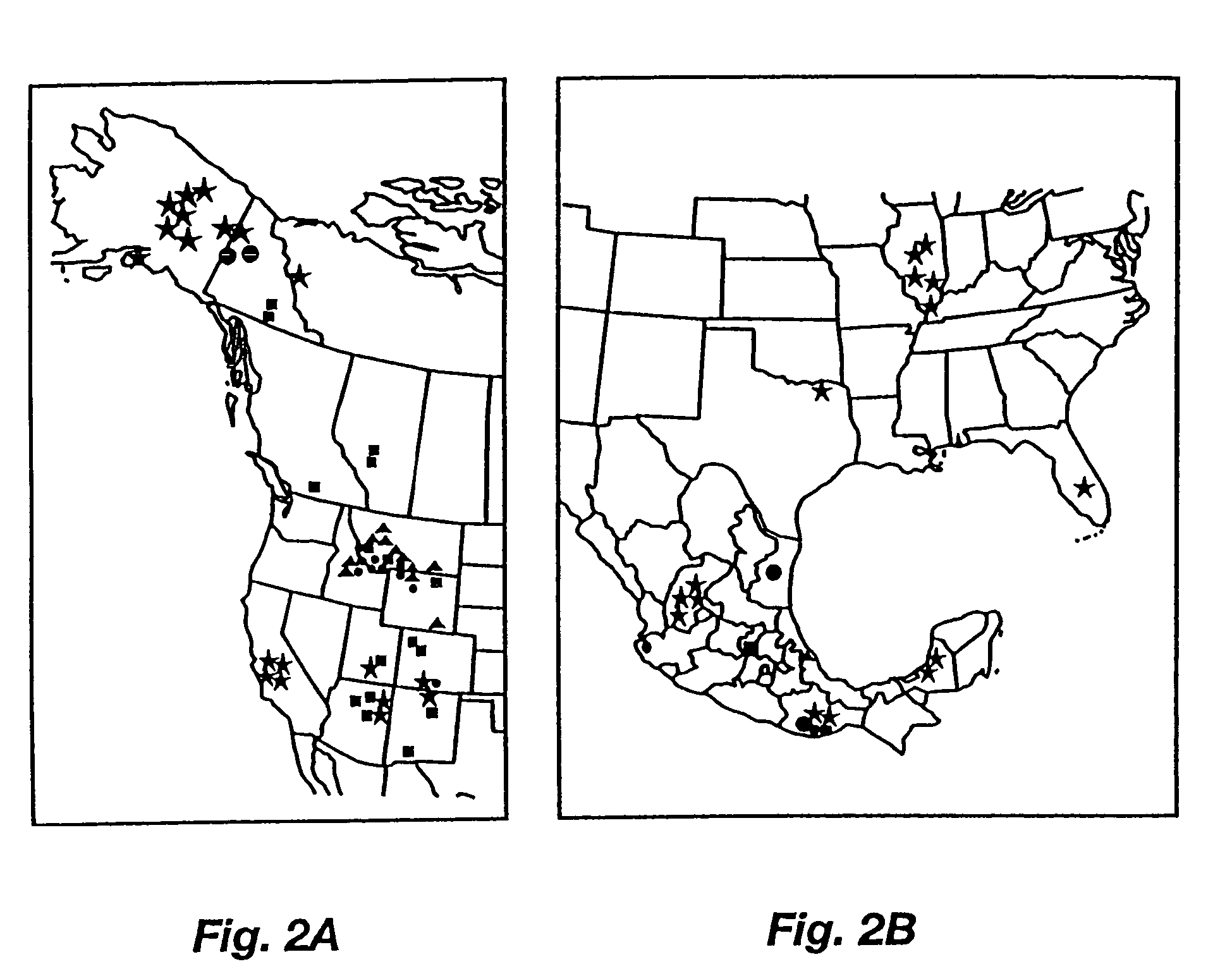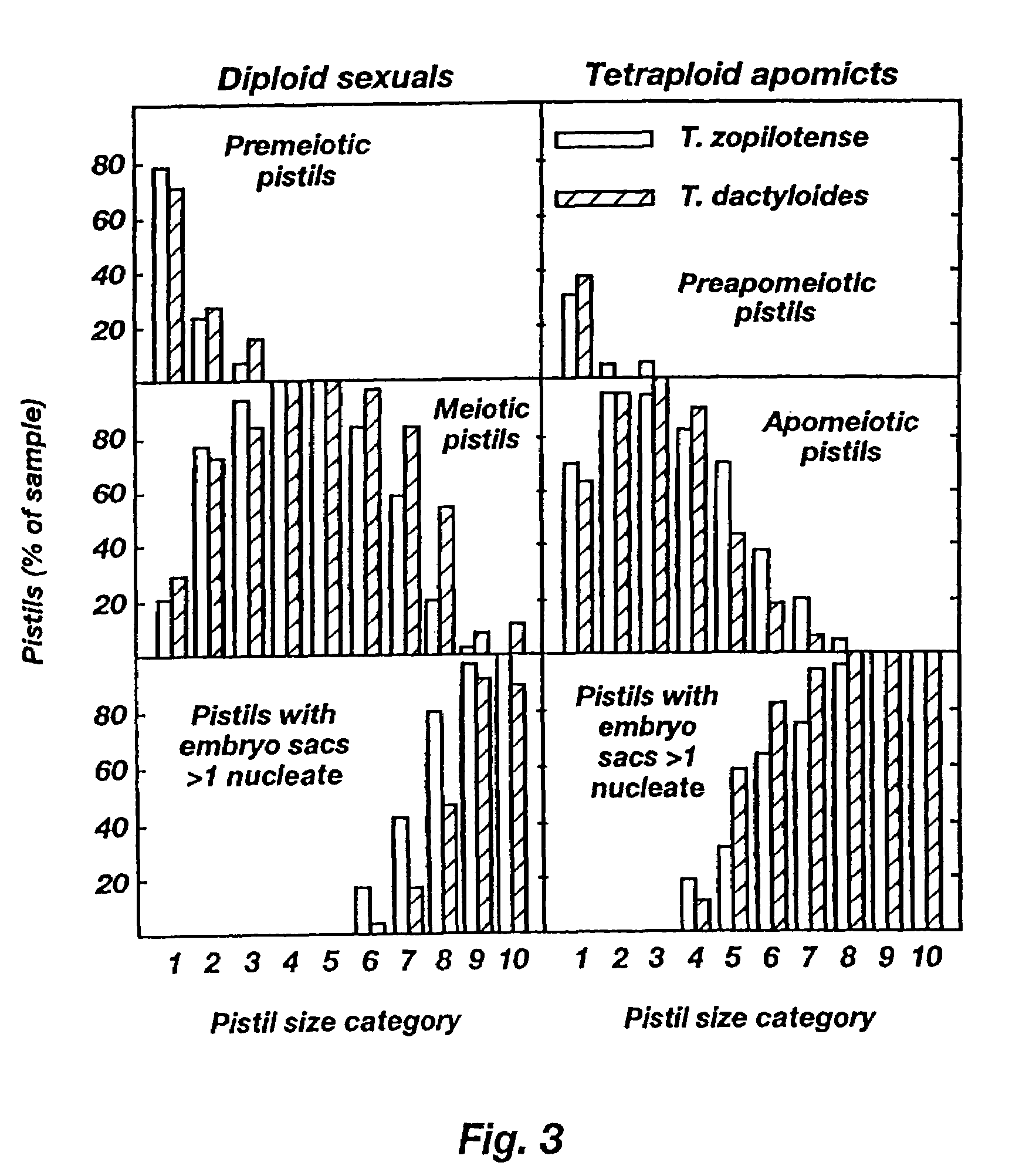Methods for producing apomictic plants
a technology of apomictic plants and apomictic roots, which is applied in the direction of plant genotype modification, fermentation, biochemistry apparatus and processes, etc., can solve the problems of distorted segregation ratios, extreme difficulty in preventing self-floralization, and proving formidable tasks
- Summary
- Abstract
- Description
- Claims
- Application Information
AI Technical Summary
Benefits of technology
Problems solved by technology
Method used
Image
Examples
example 1
Selecting and Collecting Germplasm—Dicots
[0061]It is a feature of the present invention to provide procedures for selecting and collecting the most appropriate lines from within a species or group of closely related species for the purpose of producing apomictic plants. These procedures are believed to mimic and greatly accelerate natural processes that initiate the evolution of apomictic plants from sexual plants, i.e., those natural processes that cause secondary contacts to occur among taxa adapted to greatly divergent climates and photoperiods.
[0062]In this example, there is illustrated a preferred procedure for use with plants from the subclass Dicotyledonae. In Example 2 there is illustrated a preferred procedure for use with plants from the subclass Monocotyledonae. The dicotyledonous example involves sexual species from the genus Antennaria (x≧14). It is expected that one of ordinary skill in the art could successfully apply these procedures to many species, including variou...
example 2
Selecting and Collecting Germplasm—Monocots
[0067]In this example, there is described an illustrative procedure for selecting and collecting germplasm from plants of the subclass Monocotyledonae. This monocotyledonous example involves sexual species from the genus Tripsacum (x≧18). It is expected that one of ordinary skill in the art could successfully apply these procedures to many species, including various monocotyledonous crops, such as sorghum, wheat, barley, rice, and maize.
[0068]This example involves the monocotyledonous genus Tripsacum, which is endemic to the new world and is found from 42E N to 24E S latitude (de Wet et al, Systematics of Tripsacum dactyloides (Gramineae), 69 Amer. J. Bot. 1251-57 (1982) (incorporated herein by reference), and from 0 to 2600 m above sea level (Berthaud et al, Tripsacum: Diversity and Conservation, in Taba, Maize Genetic Resources (CIMMYT, 1995) (incorporated herein by reference)). They are monoecious perennials, and the male and female flow...
example 3
Quantifying Effects of Different Photoperiods on Flowering
[0072]It is a feature of the present invention to provide procedures for quantifying the effects of different photoperiods on floral development in sexual lines selected as being the most appropriate for producing apomictic plants (Examples 1 and 2). It will be appreciated that many procedures for quantifying such effects have been published in the recent literature, and one skilled in the art may find that procedures other than those described herein are better suited for certain species.
[0073]A presently preferred method for quantifying photothermal responses of Antennaria species, which are native to temperate climates (intermediate latitudes) through alpine climates (high latitudes), has been modified from the classic studies on Oxyria digyna (Mooney and Billings, Comparative Physiological Ecology of Arctic and Alpine Populations of Oxyria digyna, 31 Eco. Monog. 1-29 (1961) (incorporated herein by reference)). A set of ec...
PUM
| Property | Measurement | Unit |
|---|---|---|
| Length | aaaaa | aaaaa |
| Width | aaaaa | aaaaa |
Abstract
Description
Claims
Application Information
 Login to View More
Login to View More - R&D
- Intellectual Property
- Life Sciences
- Materials
- Tech Scout
- Unparalleled Data Quality
- Higher Quality Content
- 60% Fewer Hallucinations
Browse by: Latest US Patents, China's latest patents, Technical Efficacy Thesaurus, Application Domain, Technology Topic, Popular Technical Reports.
© 2025 PatSnap. All rights reserved.Legal|Privacy policy|Modern Slavery Act Transparency Statement|Sitemap|About US| Contact US: help@patsnap.com



